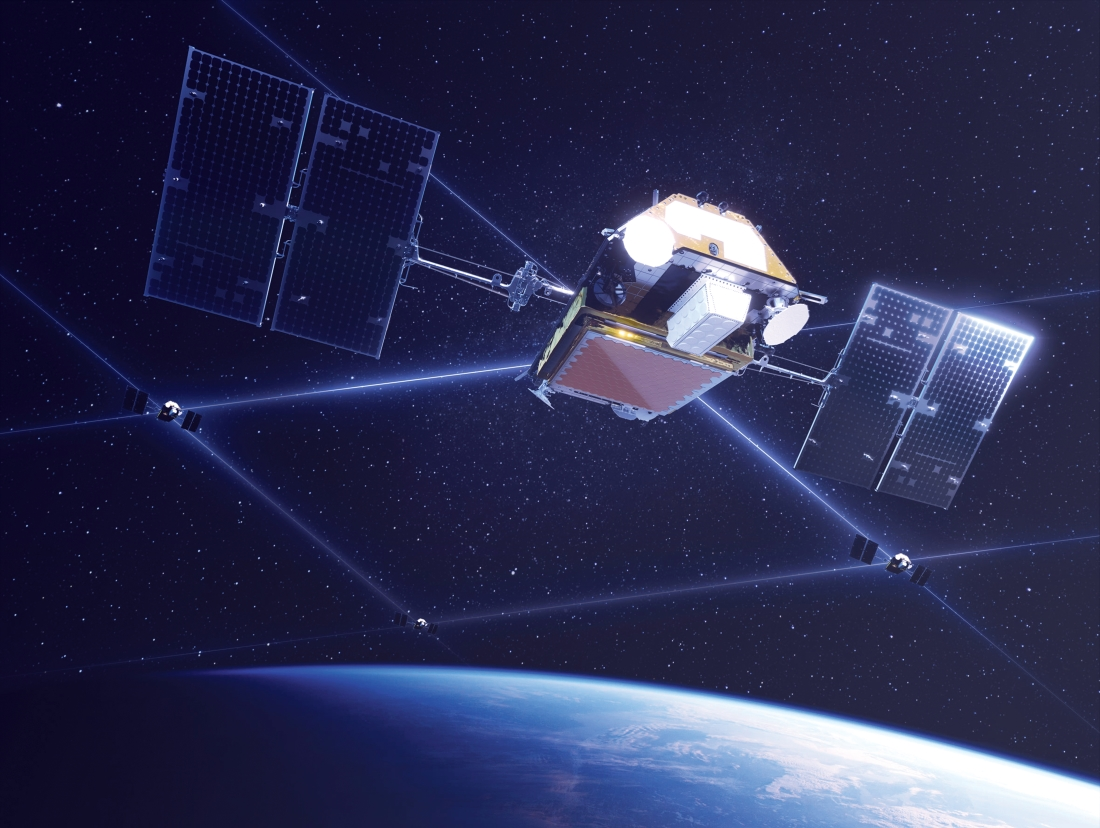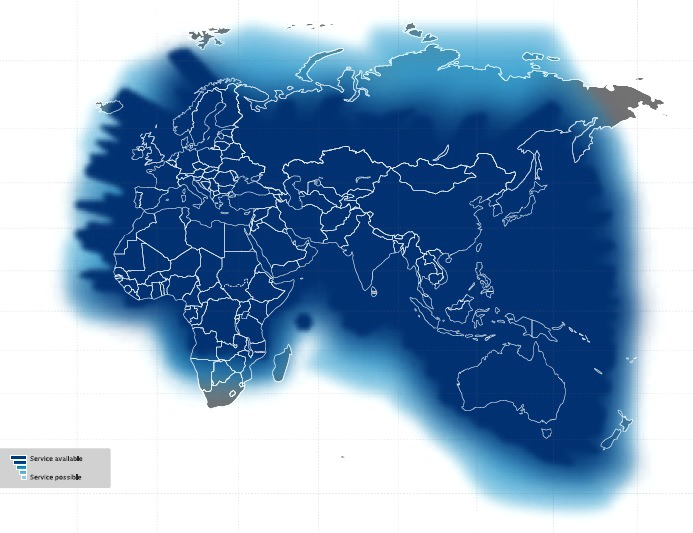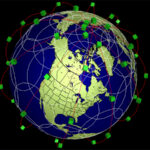This worldwide satellite-based communications system went from dream to reality in a decade but quickly failed in the market; its revival took persistence and luck, plus a new customer base.
Of course, there were also significant technological advances required in many areas, including designing and building longer-life electronics despite the unavoidable effects of space radiation on electronics. While the life of these electronic components in this environment is a function of the specific component and technology as well as orbit height (or space path), a typical figure can be as little as a few years or up to about ten years.
One way to deal with the effect of radiation is to use radiation-hardened (rad-hard) devices. Component vendors have developed various sophisticated process techniques to provide this performance. However, such devices are generally too expensive for the commercial world in which these global systems compete, and the availability of these devices in quantity was uneven. Also, many of the desired and needed latest generation ICs were unavailable as rad-hard components, or the qualification period for these special devices is too long for them to be competitive.
(Note that the situation is changing due to the widespread use of LEO satellites, SpaceCube satellites, military links, and more, resulting in more vendors are offering space-qualified, rad-hard qualified components, but that was not the case for Iridium’s designers.)
Designers of the Iridium satellites used a combination of techniques to overcome these problems.
- Using commercial ICs that have a few extra process steps added, which adds some rad-hard characteristics at a relatively low incremental cost.
- Using circuit design with extra guardbands and tolerancing to allow for parametric drift.
- Adding redundancy, error detection and correction, and resets to accommodate hard and soft failures.
- Selectively using tungsten/copper radiation shielding reduces the electron (but not the proton) aspect of radiation but adds a weight penalty.
- Acknowledging that radiation will limit a satellite’s operating lifetime and, therefore, putting standby spares in orbit and planning to launch new satellites regularly.
The original clusters of Iridium satellites performed remarkably well (three times past its original life expectancy), and all were finally replaced in January 2019 with a next-generation fleet – a real testament to their design integrity. Called the “Next Fleet” satellites, each weighs1875 pounds/850 kg, and France-based Thales Alenia Space built all in an Arizona facility (Figure 1) (Motorola built the original Iridium satellites, also in Arizona).

There is some irony or justice here: SpaceX launched these Iridium replacements, and it was Iridium’s concept and efforts which paved the way for adopting mass production and launching of large clusters of SpaceX/StarLink LEO satellites – which may even soon compete with Iridium, and SpaceX did not even exist during the Iridium project’s initial deployment.
Not the only player now
The Iridium system is not the only one which provides some degree of worldwide satellite-based communication for voice and data. Competitors include Globalstar Inmarsat and Thuraya (plus the possibility of a SpaceX/Starlink system):
Globalstar was created from a section of Ford Aerospace in 1991 and works closely with Qualcomm for components and technology. The system uses an LEO satellite constellation consisting of 48 active satellites, placed in orbit about 900 miles in space. Unlike Iridium, which uses the satellites as orbiting MTSOs, Globalstar uses a less complex technique called bent-pipe. Still, a satellite always needs to have both the handset and the base station in sight. Thus, there is no coverage over the Earth’s poles as the satellites do not illuminate those areas.
Thuraya is a large-footprint regional network based in the United Arab Emirates which uses two Boeing-built geosynchronous satellites to provide mobile coverage to more than 110 countries in Europe, the Middle East, North, Central, and East Africa, Asia, and Australia, but not the Western Hemisphere or the poles (Figure 2). However, the phones also incorporate standard cell-phone technology, so conventional cell coverage is worldwide as long as there is a cell system in range. The longer satellite path link means a weaker signal and thus less-consistent service, while the geosynchronous orbit incurs a much longer path-length propagation delay, which can be a problem.

Inmarsat originated from the International Maritime Satellite Organization (INMARSAT), at the request of the International Maritime Organization (IMO) – the United Nation’s maritime body – but is now a private UK-based company. It uses thirteen geostationary telecommunications satellites which operate in subgroups to provide three levels of footprint and performance: global beam coverage from latitudes of −82⁰ to +82⁰; regional spot beam coverage which operates with significantly smaller antennas; and narrow spot beam coverage (about several hundred kilometers in diameter) via three of its satellites and which can use even smaller antenna while supporting much higher data rates.
Conclusion
Looking back at satellites’ earliest use for communication, they were envisioned only as relay points in space between large, land-based dish antennas. Low-earth orbit satellites provided only sporadic coverage and used small but fast-tracking dish antennas to follow the LEO satellite. In contrast, geostationary satellites provided a constant link and were supported by much larger but relatively fixed dish antennas. In just a few decades, the technology has advanced to where true worldwide coverage is available for voice and data using a convenient handset and no dish antenna. No single technology advance made this possible, but the Iridium system showed what could be done when personal energy, radical innovation, commitment, personal connections, money were focused on making technical “dreams” into reality.
EE World Content
Iridium Satellite Connectivity Added to Versatile ConnectPort X5 R Rugged Gateway
DeLorme Unveils Plans for Iridium-Based Two-Way Satellite Communicator
Basics of GPS receivers
GPS, Part 2: Implementation
GPS, Part 1: Basic principles
External References
- “Eccentric Orbits: The Iridium Story,” John Bloom, Atlantic Monthly Press, 2016.
- “Iridium Will Host Science Payloads,” IEEE Spectrum, Nov. 30, 2009
- “The Collision of Iridium 33 and Cosmos 2251,”Aerospace, December 10, 2015
- “A guide to useful, useless, official and unofficial Iridium websites”
- “The Rise and Fall and Rise of Iridium,” Air & Space Magazine, September 2004
- “Iridium ends legacy satellite service, switches all traffic to Next fleet,” Space News, February 2019
- “SpaceX completes Iridium Next constellation,” Space News, January 11, 2019
- “Iridium starting to deorbit legacy satellites as Next constellation comes online,” Space News, May 1, 2017
- “Elon Musk’s Ambitious Communication Project to Ring Earth with 40,000 Satellites,” News18, Sept 19, 2020
- Wikipedia, “Starlink”
- “Starlink: SpaceX’s satellite internet project,” com, January 17, 2020
- Thales Group, “Happy Birthday Iridium Next,” January 14, 2020
- PhoneIsMobile, “Iridium Satellite Phone”
- Wikipedia, “Iridium satellite constellation”
- Wikipedia, “Inmarsat”
- Wikipedia, “Thuraya”
- Wikipedia, “Globalstar





Leave a Reply